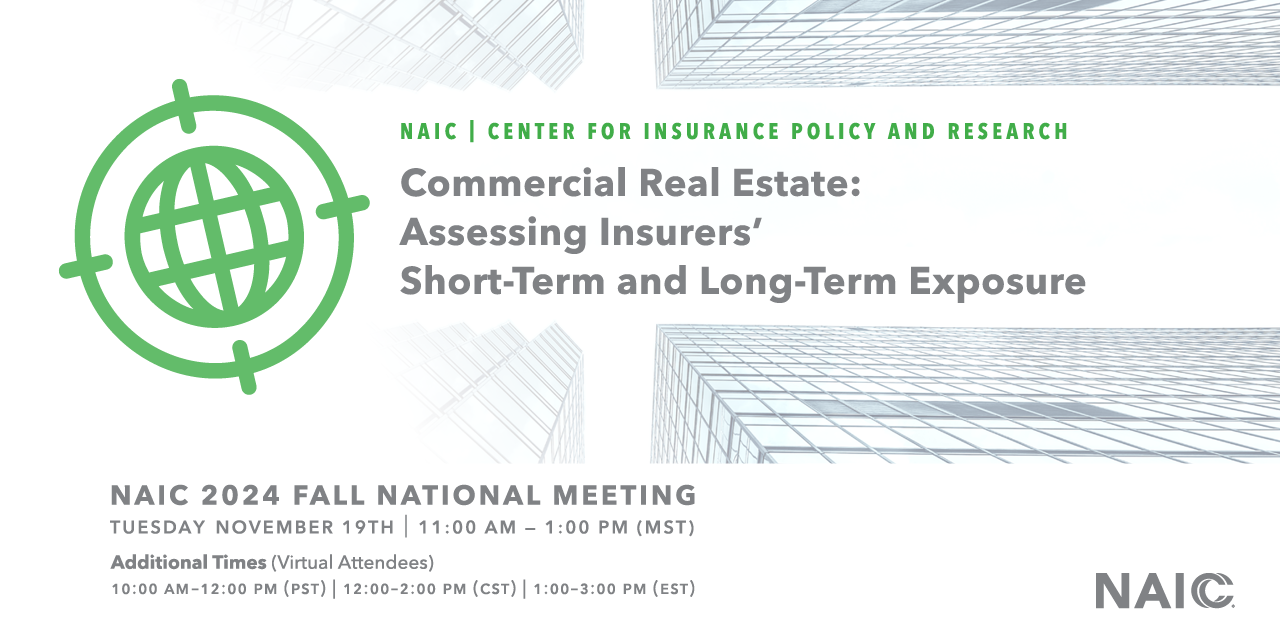
Commercial Real Estate - Assessing Insurers’ Short-Term and Long-Term Exposure
Real estate investments, including conventional mortgage loans and commercial mortgagebacked securities (CMBS), are a traditional asset class on insurers' balance sheets. These investments offer financial benefits, such as matching the duration of long-term mortgages with the long-term liabilities of life insurance companies. However, like any asset class, they come with risks and an evolving investment landscape. Recent challenges in the commercial real estate sector include the rise of hybrid and remote work and issues in some downtown areas. This event will explore the short- and long-term risks associated with insurer commercial real estate investments and how the industry and regulators are addressing these challenges. Additionally, we will discuss the significant role these investments play in community development and the broader economy.
Panel Speakers:
Bob Kasinow, Assistant Deputy Superintendent, New York Department of Financial Services
Carmi Margalit, Managing Director, North America Financial Services Ratings
Tim Nauheimer, Manager, Macroprudential Supervision, Capital Markets Bureau NAIC
Kyeonghee Kim, Assistant Professor of Risk Management and Insurance in the Department of Risk Management/Insurance, Real Estate and Legal Studies at Florida State University’s College of Business.
Xiao (Joyce) Lin is an Associate Professor in the Maurice R. Greenberg School of Risk Management at St. John's University
Additional Speaker: Kelly Edmiston, Policy Research Manager, Center for Insurance Policy and Research
Moderated by:
Jeff Czajkowski, Director, Center for Insurance Policy and Research
CIPR's special session is open to all registered NAIC 2024 Fall National Meeting participants.
About the National Association of Insurance Commissioners
As part of our state-based system of insurance regulation in the United States, the National Association of Insurance Commissioners (NAIC) provides expertise, data, and analysis for insurance commissioners to effectively regulate the industry and protect consumers. The U.S. standard-setting organization is governed by the chief insurance regulators from the 50 states, the District of Columbia and five U.S. territories. Through the NAIC, state insurance regulators establish standards and best practices, conduct peer reviews, and coordinate regulatory oversight. NAIC staff supports these efforts and represents the collective views of state regulators domestically and internationally.
